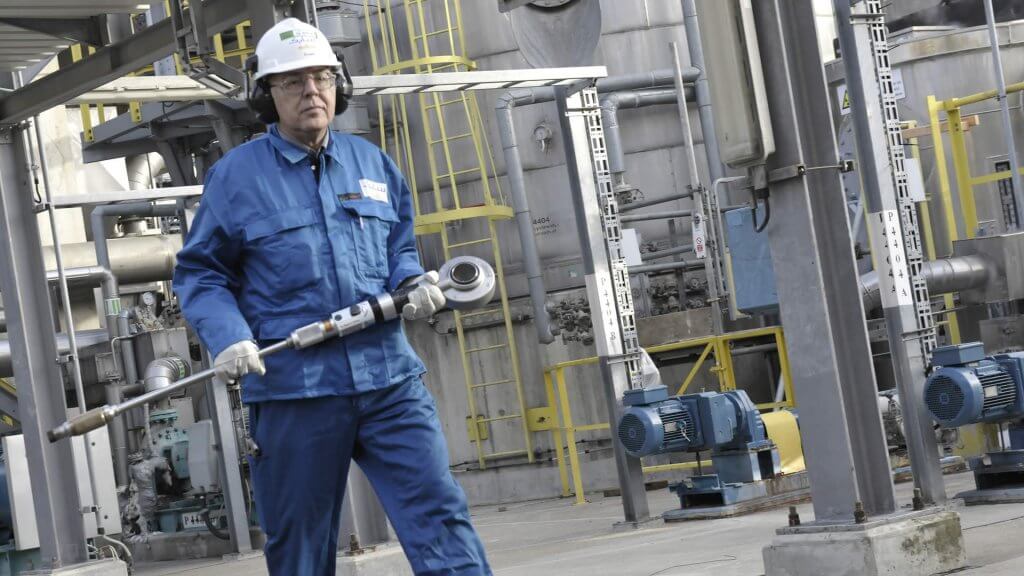Guarantee effortless operation of large manual valves, to create a safer working environment and minimize interruptions or shutdowns.
Facilitate safe and ergonomic operation of large manual valves
Process plants have many large valves spread across the facility. It is important to ensure that they are operated safely and correctly to prevent accidents, and to comply with health and safety guidelines and regulations. Operational hazards often go unnoticed until an incident occurs, and some only become a real hazard over time, such as the frequent manual operation of large multi-turn valves. This can lead to human injury, lost man days and other associated risks and costs.

Using manual valves to save on actuator CAPEX
Process facilities make use of a wide variety of valves, differing in size and type, and matching the expected flow, pressures, and controls. Based on these parameters, along with Human Factor Engineering (HFE) practices (in line with guidelines like Shell DEP 30.00.60.13-Gen.), plant designers select the valves that need to be actuated. However, in order to save on CAPEX, many valves are left unactuated. It can be estimated that approximately 50% of all industrial valves worldwide are manually operated.
Required torque often exceeds operator’s capacity
Studies in processing plants have shown that valve operation is perceived as the most physical demanding task by operators and cause the majority of back, head and neck injuries of these workers. This puts the employee and the employer at significant risk. In most cases, the required torque of manual valves exceeds the operator’s capacity. To open a large valve, operators need to exert high torque to initiate valve movement. Movement is often blocked by deposits or infrequent use of the valve. In these cases, the torque can be too high, leaving the operator with a valve that cannot be opened manually.
Repetitive action puts body under stress
Operators responsible for maintenance work in large utilities or refinery plants are often at risk of occupational health problems, such as muscular or skeletal illnesses caused by repetitive strain injury (RSI) or over-exertion. Equally, they are more exposed to workplace accidents if proper procedures are not followed. A particular problem for employees working in these sectors is opening and closing the vast numbers of manual valves inherent in a complex pipe network. Rotating the valves manually is by nature a highly repetitive action, constantly putting the same muscles and the same parts of the body under stress. In addition, being in the same position over a long period of time causes fatigue and this creates an additional risk.


Large manual valves getting stuck due to lack of maintenance
Opening and closing manual valve becomes even harder on valves that have not been regularly maintained. If these valves have not been opened and closed for a long time, they become extremely difficult to open. This can turn into a vicious circle – they are not properly maintained precisely because they are difficult to operate, making it a time-consuming exercise. Maintenance is carried out at longer and longer intervals and the valves become even harder to activate and can even get stuck.
Gearbox operated manual valves can lead to muscular fatigue
When valves are coupled to a gearbox, the number of turns to open or close the valve is usually increased substantially. In most cases, the required torque of manual valves exceeds the operator’s capacity. Opening and closing large manual valves often requires extensive time and sometimes even multiple operators.
Current risk mitigations
Based on HFE (Human Factor Engineering) guidelines, there are several principles in place in the industry related to safe manual valve operation. For instance, any valve that requires more than 100 turns to go from fully open to fully closed should be equipped with a fixed or mobile actuator (hydraulic, electric, or pneumatic). Also, when multiple manual valves are to be opened simultaneously, or shortly one after the other, this would require multiple operators, to distribute the workload that would otherwise cause fatigue or injury to operators. Obviously, this increases labour costs and lowers efficiency.

Portable actuators are a practical alternative for manual valve operation
Effortless operation of your manual valves is essential to create a safer working environment and minimize interruptions or shutdowns. Portable valve actuators offer a smart solution for all situations where heavy manual valve operations are involved.
A cost saving alternative for fixed actuators
A lightweight valve operator saves you investing in lots of fixed actuators. It offers an alternative to expensive actuators, for operating valves with high torque or number of rotations.


Speed-up large manual valve operation
Highly flexible, easy to mount portable valve actuators are ideal for turnarounds and other valve maintenance activities. You can mount these valve operators to any valve at any given moment thanks to their easy adaptation design. Solutions
with universal coupling plates reduce effort, improve efficiency, and minimize
downtime during plant stops and maintenance.
A customised solution for your plant
Our site engineers can inspect your large manual valves and survey other potential hazardous operational issues. A custom-made solution can then easily be designed and custom-fitted. Sofis has supplied universal and bespoke portable valve operation systems worldwide for more than 15 years.


